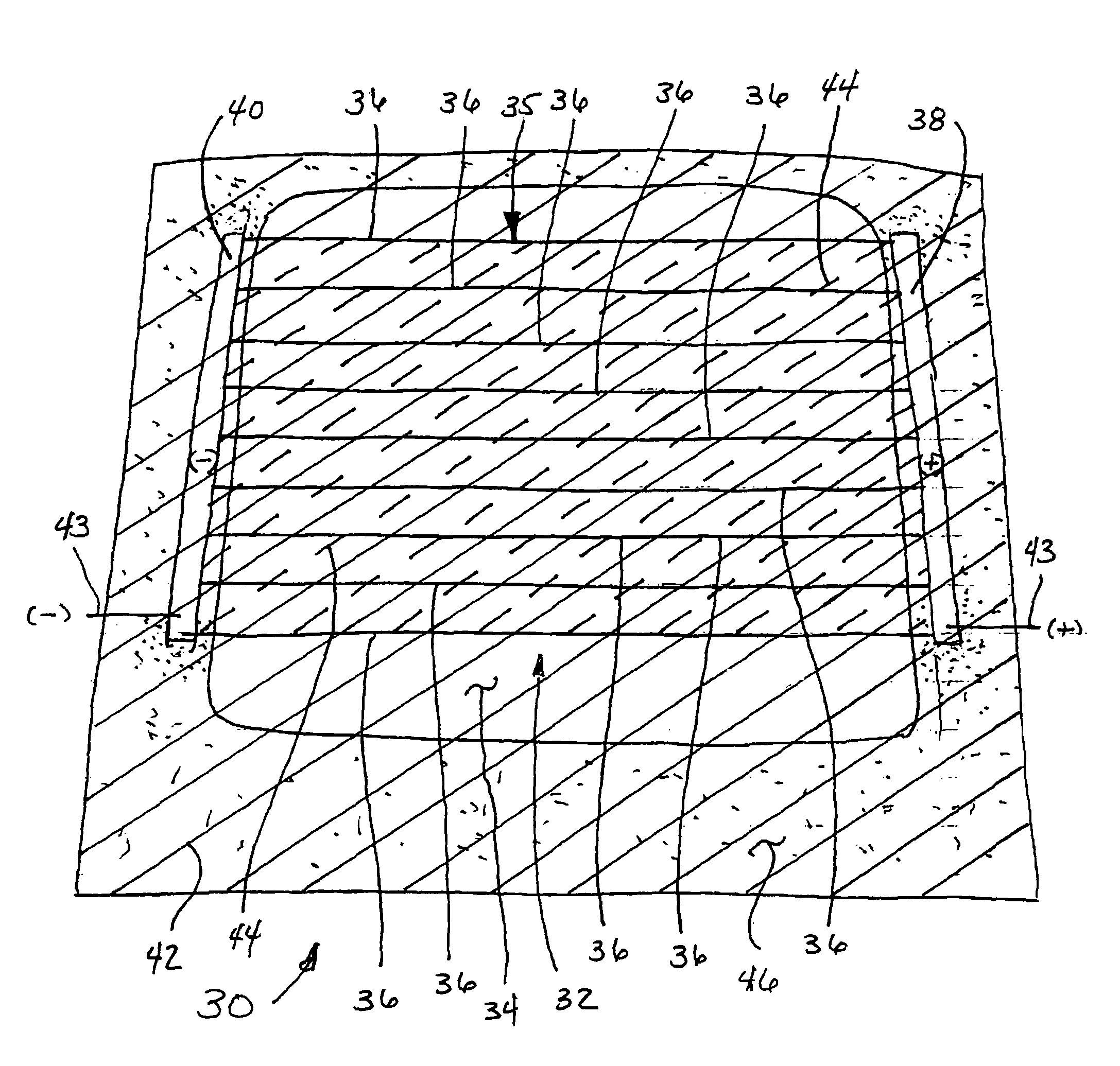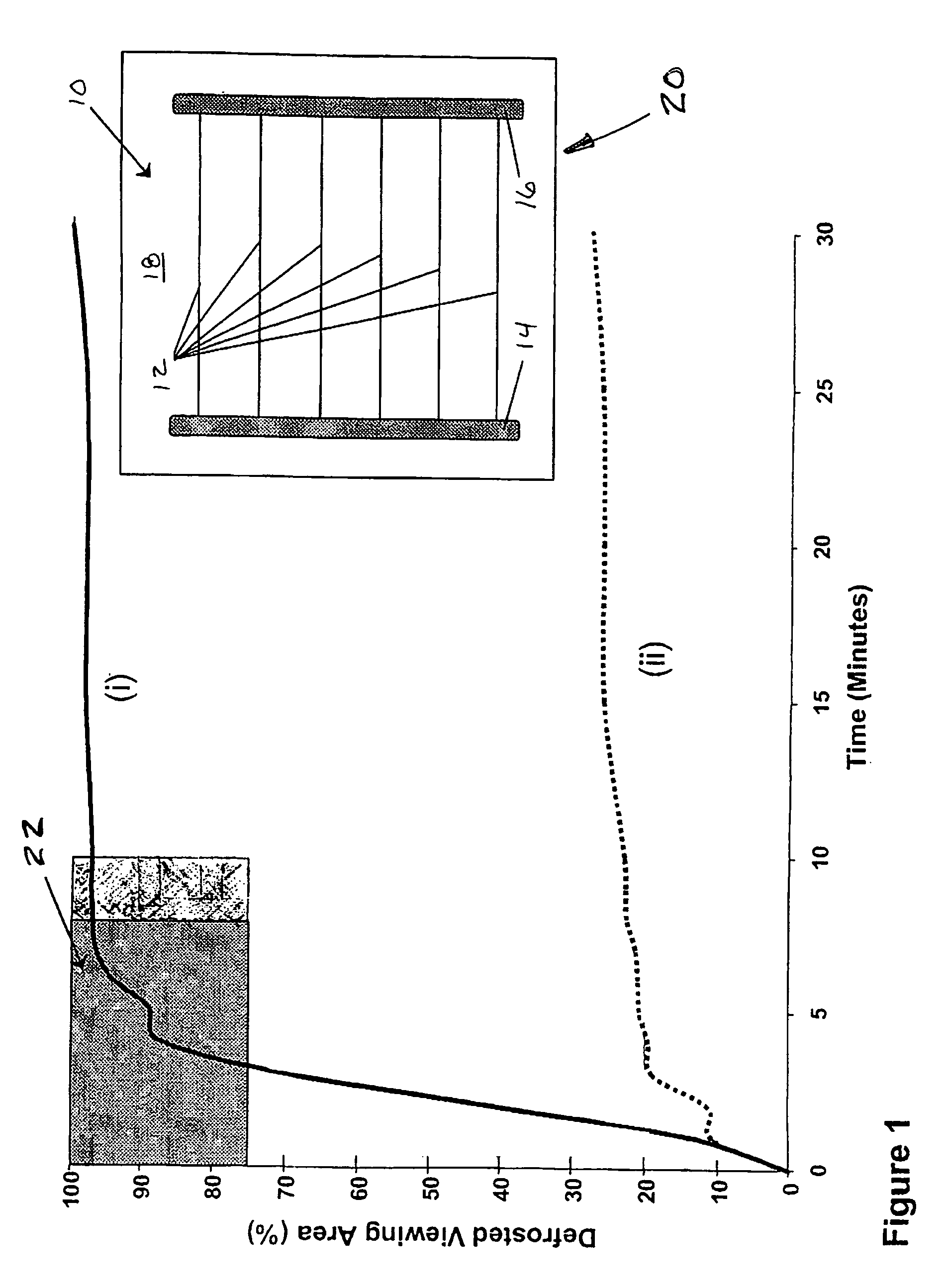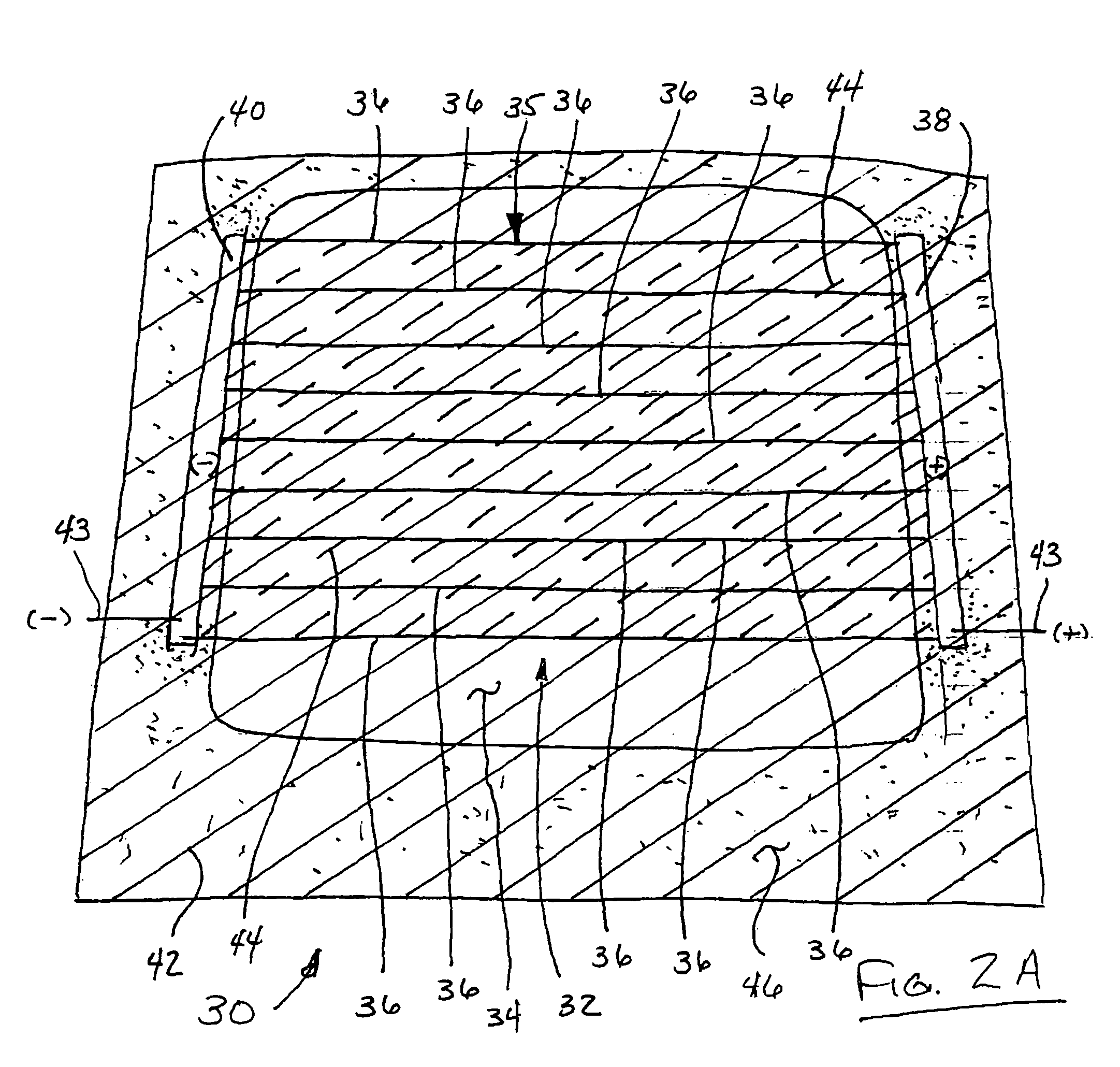Window defroster assembly having transparent conductive layer
a technology of transparent conductive layer and defroster, which is applied in the direction of ohmic resistance heating, heater elements, transportation and packaging, etc., can solve the problems of limited ability of plastics to conduct heat, defroster or defogger, and windows are not without limitations, so as to increase the spacing of the grid
- Summary
- Abstract
- Description
- Claims
- Application Information
AI Technical Summary
Benefits of technology
Problems solved by technology
Method used
Image
Examples
Embodiment Construction
[0020]The following description of the preferred embodiment is merely exemplary in nature and is in no way intended to limit the invention or its application or uses.
[0021]The inventors have observed that a conventional heater grid or defroster formed on a plastic panel (using a metallic ink and subsequently cured according to the manufacturer's recommendations) performs poorly in industry standardized defroster tests established for the evaluation of a heater grid on a glass window. The test protocol for the automotive industry requires that at least 75% of the visual area be defrosted within a 30 minute time frame. This protocol, however, is considerably slower than the results typically seen for a glass window. In order for a defroster formed on a plastic panel to achieve performance similar to a defroster formed on glass, the heater grid must actually defrost at least 75% of the viewing area in less than about ten minutes. The test protocol utilized to characterize window defros...
PUM
 Login to View More
Login to View More Abstract
Description
Claims
Application Information
 Login to View More
Login to View More - R&D
- Intellectual Property
- Life Sciences
- Materials
- Tech Scout
- Unparalleled Data Quality
- Higher Quality Content
- 60% Fewer Hallucinations
Browse by: Latest US Patents, China's latest patents, Technical Efficacy Thesaurus, Application Domain, Technology Topic, Popular Technical Reports.
© 2025 PatSnap. All rights reserved.Legal|Privacy policy|Modern Slavery Act Transparency Statement|Sitemap|About US| Contact US: help@patsnap.com



